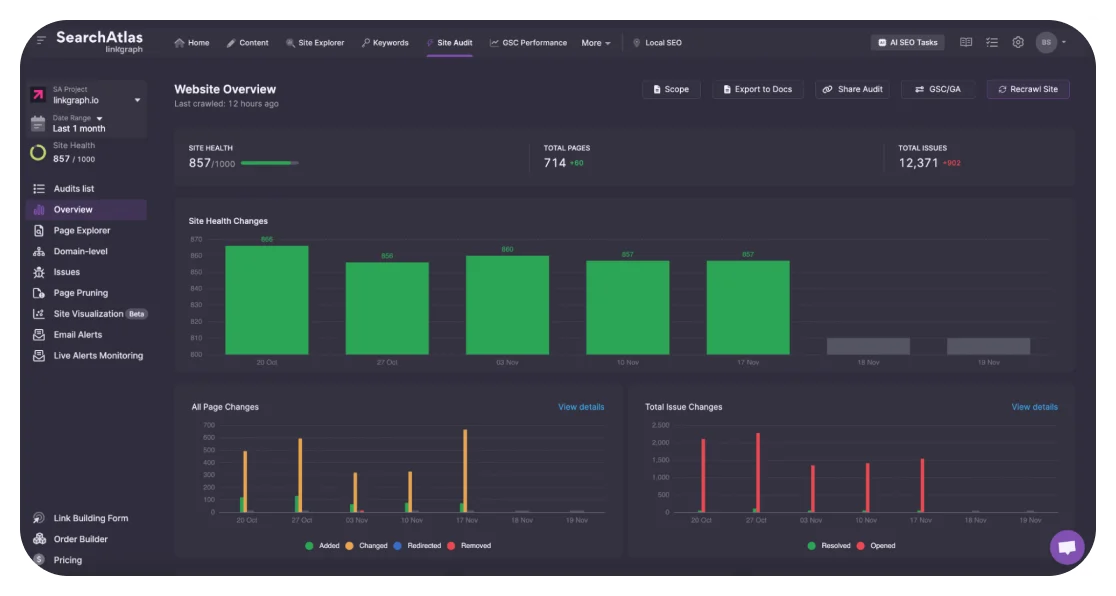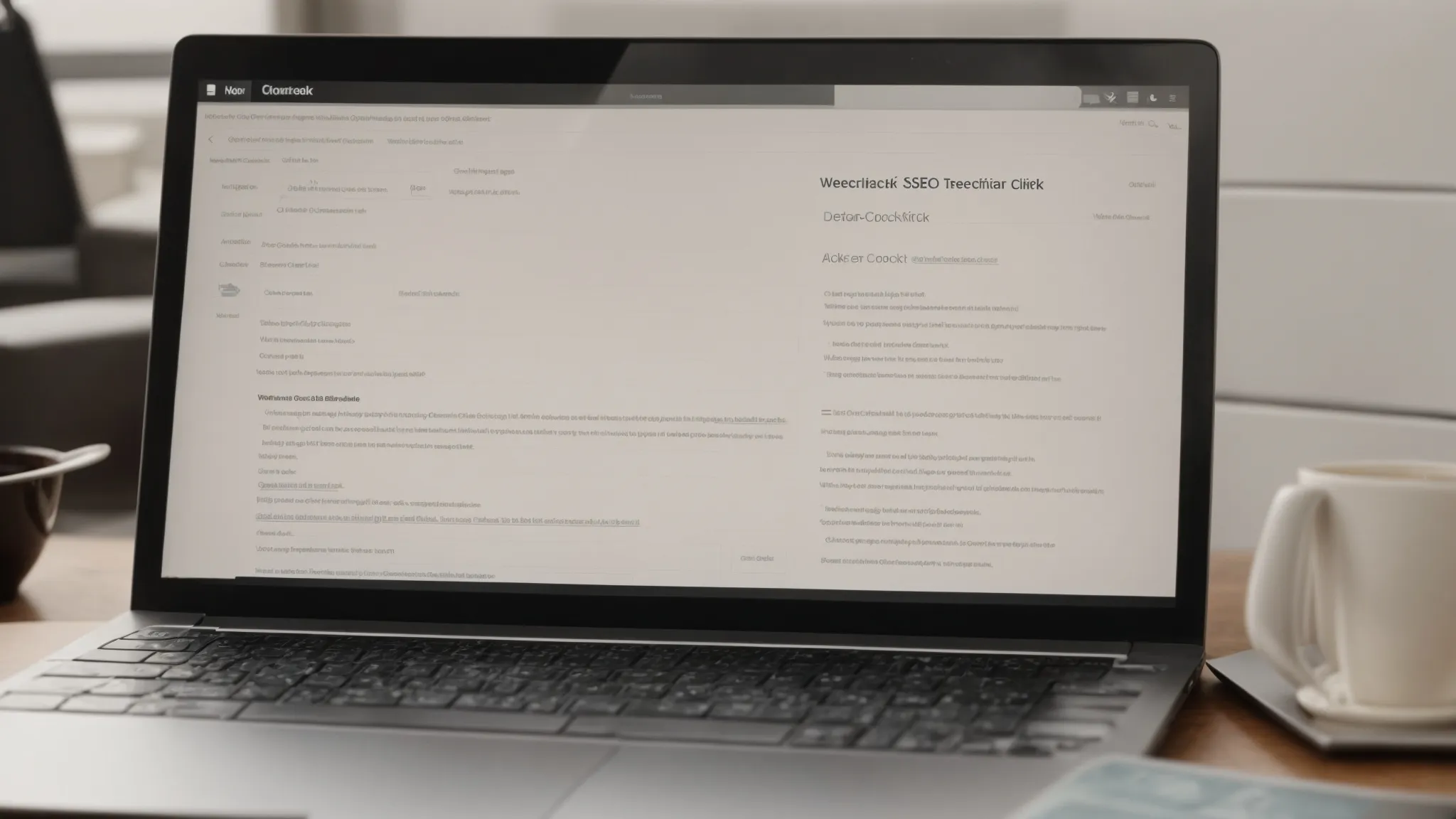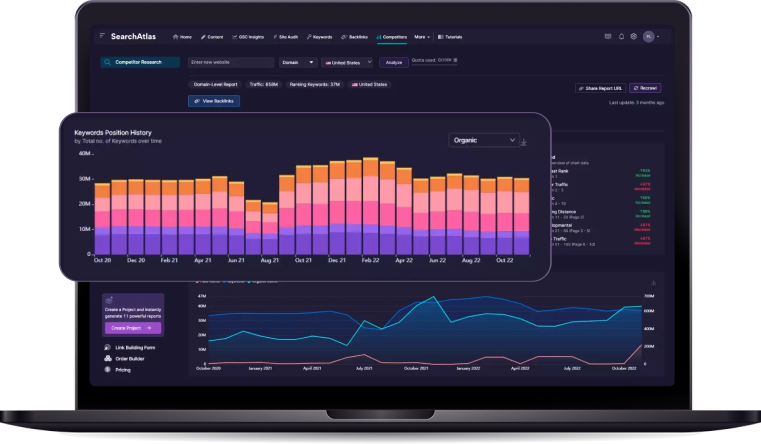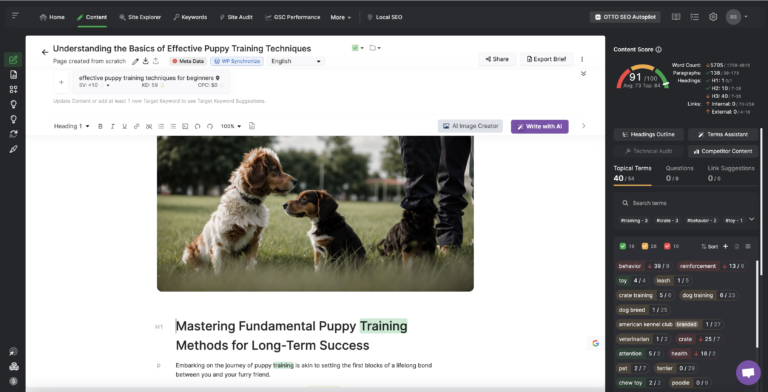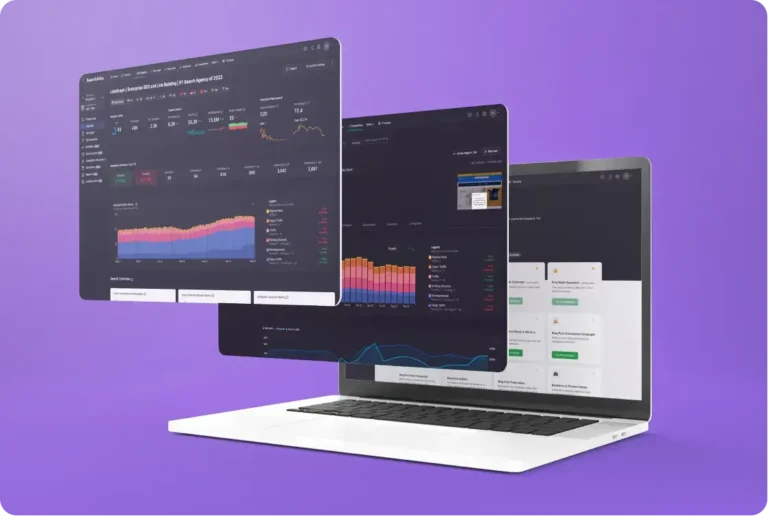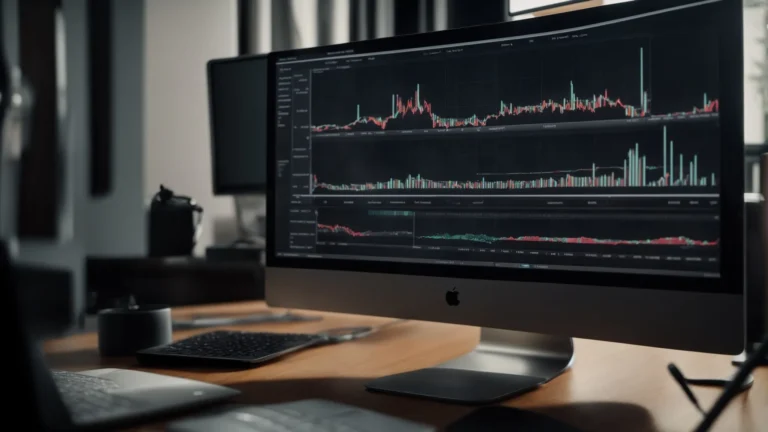What Is Technical SEO? Basics and 10 Best Practices
Navigating the complex landscape of technical SEO can seem daunting to even the most seasoned digital marketer.
At its core, technical SEO lays the foundation for a website to improve its visibility and rankings within search engine results, ensuring both search bots and visitors can access and interpret site content effectively.
It encompasses a myriad of elements, from site speed to a well-structured sitemap, all aimed at enhancing the overall user experience.
Each aspect plays a critical role in how a website is crawled and indexed by search engines like Google.
Keep reading to uncover the essentials of technical SEO and learn how to implement ten industry-vetted best practices that can catapult your search engine rankings.
Key Takeaways
- Technical SEO Is Essential for Enhancing Search Engine Visibility and User Experience
- A Well-Structured Site Architecture and Sitemap Submission Are Key to Efficient Search Engine Crawling and Indexing
- Proper Use of Canonical Tags and Addressing Duplicate Content Positively Impact Search Engine Rankings
- Page Speed, Mobile-Friendliness, and the Use of HTTPS Are Important Factors in Technical SEO That Affect Both User Perception and SERP Positioning
- Ongoing Vigilance and Regular Site Audits Are Needed to Adapt to Algorithm Changes and Maintain Technical SEO Health
What Is Technical SEO?

Embarking on the journey of understanding technical SEO, one must recognize it as the foundation of search engine optimization. It concerns optimizing a website’s infrastructure to facilitate search engine crawlers’ efficient access, indexing, and interpretation of site content. Essentially, technical SEO sets the stage for its content to potentially thrive in the competitive arena of search engine rankings.
The role of technical SEO extends beyond the mere construction of a sitemap or the implementation of SSL; it demands an in-depth comprehension of site structure, page speed, and the intricacies of server responses. With a myriad of devices accessing the web, technical SEO ensures that user experience remains consistently positive and that websites are fully equipped to serve the vast array of visitor expectations.
Technical SEO best practices encapsulate a wide array of critical tasks for marketers and developers alike, ranging from thorough SEO audits to meticulous keyword research. These practices are instrumental in composing a refined SEO strategy capable of enhancing search engine ranking, thus multiplying a website’s visibility to its intended audience.
Providing a guide to understanding ‘what is technical SEO’ involves acknowledging the importance of elements such as crafting well-structured XML sitemaps, ensuring swift page loads, and adhering to Google Search Central’s guidelines. Such measures are vital for cultivating an online environment where content and user experience flourish hand in hand for the benefit of the searcher, the brand, and the marketer.
Why Is Technical SEO Important?

In the realm of search engine optimization, prioritizing technical SEO emerges as a critical endeavor for every professional marketer and developer.
It acts as the spine that supports all other SEO tasks, ensuring that the website is comprehensibly accessible and indexable by search engines.
By developing an SEO-friendly site architecture, brands enable search bots, including the meticulous Googlebot, to analyze and evaluate their webpages efficiently.
This initiative is paramount to unlocking improved search rankings and enhancing a site’s visibility.
As the creators of Search Atlas can attest, optimizing the structural integrity of a website unlocks a plethora of content opportunities, directly impacting conversions and, ultimately, a client’s bottom line.
Create SEO-Friendly Site Architecture
Crafting an SEO-friendly site architecture is not merely a technical feat; it’s about laying the groundwork for search engines to chart a clear path through a website’s content. A thoughtfully designed architecture enhances crawlability, allowing search bots to effortlessly traverse category pages, blog posts, and product listings.
When executed correctly, a well-considered site structure aids visitors in navigating the web page landscape, bolstering the user experience and, by extension, search engine rankings. This foundation is indispensable for any SEO campaign aiming to improve a brand’s search engine visibility:
- Architecting a hierarchy that mirrors the natural flow of information, ensuring that content is intuitively accessible.
- Utilizing breadcrumbs and logical URL structures to enhance user orientation and search engine understanding.
- Incorporating schema markup to delineate and communicate the nature of the site’s content to search engines effectively.
Understanding Crawling

Navigating the technical terrain of SEO, professionals encounter crawling as a pivotal element in the quest for search engine recognition.
This process involves search engines, particularly their automated agents known as crawlers or spiders, meticulously scanning through websites to understand the content and structure of web pages.
A key step for any SEO specialist seeking to enhance their site’s discoverability is to submit a sitemap to Google.
This action not only guides Googlebot through the site’s pages but also signals the presence of valuable content ready to be indexed.
As such, submission serves as a clear invitation to search engines, beckoning them to review and rank the website’s offerings in the vast sea of online information.
Submit Your Sitemap to Google
Mastering the submission of a sitemap to Google is a fundamental SEO task that can significantly elevate a website’s visibility to search engine scrutiny. When a developer submits an XML sitemap, it acts as a beacon to Google’s algorithms, signaling the presence of pages ready for evaluation and potential inclusion in search results.
This procedural act ensures that newly added or updated content does not linger unseen by search engines, aiding prompt indexing and thus, swifter appearance in SERPs. By streamlining crawler access, sitemap submission stands as a hallmark of technical seo efficiency:
| SEO Step | Purpose | Outcome |
|---|---|---|
| XML Sitemap Submission | Guide crawlers to website content | Enhanced Indexing & SERP Appearance |
Understanding Indexing

Exploring the technical SEO landscape requires a thorough understanding of indexing—a process where search engines organize information before serving it to users.
It is within this space that professionals must employ strategic methodologies to correctly steer search engines toward the content that should feature in search results.
Key to mastering this domain are techniques like the wise application of noindex tags and the adept handling of canonicalization, both designed to prevent duplicity in indexing and ensure accurate representation of web pages.
These tools underpin a sophisticated approach to maintaining a clean, precise digital footprint within search engines.
Noindex Tag
In the intricate dance of SEO, the Noindex tag plays a crucial role in dictating the fate of web pages with regard to their visibility to search engines. Employing this tag instructs search engines like Google to exclude specific pages from their indices, thus preventing them from appearing in the search results.
SEO specialists leverage the Noindex tag to sidestep issues of content redundancy and focus search engine energy toward the most significant, conversion-driving pages. Such technical precision enables a website’s most valuable content to take center stage in the search engine spotlight, enhancing overall search engine optimization effectiveness.
Canonicalization
Canonicalization stands as a beacon in the tumultuous sea of digital content, guiding search engines to the definitive versions of similar or duplicative web pages. It instructs crawlers on which version of a page to consider as the primary source, thereby avoiding the pitfalls of split search rankings due to content duplicity.
By implementing canonical URLs, SEO professionals ensure that search engines consolidate link signals for comparable pages, effectively bolstering a site’s search engine ranking potential. This method fortifies the clarity of a website’s intent, allowing search engine algorithms to attribute the correct weight to the appropriate pages.
Technical SEO Best Practices

In the landscape of search engine optimization, technical SEO stands as the cornerstone that undergirds the visibility and operability of a digital presence, ensuring a seamless user interaction from the backend to the browser.
Companies and SEO specialists alike must vigilantly maintain a robust technical SEO strategy, which includes crucial steps such as the adoption of HTTPS, the refinement of site accessibility, and the acceleration of page speed.
Furthermore, they must guarantee mobile responsiveness, the strategic use of structured data, and the meticulous resolution of content duplicity and broken pages.
Amidst the digital age’s evolving standards, attention to Core Web Vitals and multilingual content optimization, along with continuous monitoring for emerging technical issues, are indispensable.
This introduction navigates the tenets of technical SEO to help brands fortify their digital infrastructure for maximum search engine recognition and user satisfaction.
1. Use HTTPS
Adopting HTTPS, or Hypertext Transfer Protocol Secure, resonates as a critical step in fortifying a website’s credibility and user trust. This secure version of HTTP encrypts the data exchanged between a visitor’s browser and the web server, safeguarding sensitive information against interception and enhancing overall site security.
Search engines, particularly Google, favor websites that incorporate this layer of protection, often rewarding them with improved search rankings. For a brand attentive to SEO and customer privacy, transitioning to HTTPS is a decisive move towards establishing a trustworthy and SEO-optimized online presence.
2. Make Sure Only One Version of Your Website Is Accessible to Users and Crawlers
Maintaining a singular, accessible version of a website for both users and search engine crawlers is paramount to the integrity of an SEO framework. This step ensures consistency and prevents the potential confusion that arises when disparate versions dilute a site’s authority and search engine ranking potential.
Brands and their technical SEO specialists must meticulously direct traffic to a canonical domain, whether it prefers the ‘www’ prefix or opts for a non-www URL. Through this targeted approach, businesses can avoid the pitfall of divided backlink authority, providing clarity for search bots and a streamlined experience for visitors.
3. Improve Your Page Speed
Accelerating page speed is an essential aspect of technical SEO, directly impacting not only user experience but also site ranking in search engines. Slow-loading pages can lead to increased bounce rates, as visitors’ patience wears thin, while search engines interpret sluggishness as a sign of poor site quality. Hence, expediting page loads becomes a quintessential task for companies aiming to optimize their digital presence for both customers and search algorithms alike.
Professionals in the realm of search engine optimization discern that the swiftness with which a page presents its content is more than a mere convenience—it is a determinant in a visitor’s decision to engage with the site further. By harnessing techniques such as compressing images, leveraging browser caching, and minifying CSS and JavaScript files, SEO experts endeavor to advance a website’s performance, thus fostering a positive, swift navigation experience that resonates favorably with end-users and search engines.
4. Ensure Your Website Is Mobile-Friendly
In today’s digital environment, where a significant majority of web traffic originates from mobile devices, ensuring that a website is mobile-friendly emerges as a non-negotiable component of technical SEO. A mobile-responsive design adapts to varying screen sizes, providing an optimal browsing experience across smartphones, tablets, and other handheld devices.
Search engines like Google have made it clear that mobile-friendliness is a ranking factor, rewarding sites that offer seamless usability for mobile users with higher search rankings. An SEO strategy that does not prioritize mobile-friendly website design falls short of meeting both user expectations and the technical criteria pivotal for achieving prominent search engine visibility.
5. Implement Structured Data
Structured data imbues web content with a defined organization, enabling search engines to not only crawl but also comprehend and display it in a more informative manner. By implementing structured data through formats like schema markup, professionals effectively communicate the context of information, enriching the user’s search experience with enhanced features such as rich snippets.
Such meticulous data organization significantly contributes to a site’s visibility and click-through rates from search engine results pages. SEO experts recognize the strategic deployment of structured data as a surgical enhancement to a site’s communicative clarity, forging a path for search engines to present data in the most user-centric and relevant way.
6. Find & Fix Duplicate Content Issues
Addressing Duplicity Within a Website’s Content is a fundamental element of technical SEO. Identifying and resolving duplicate content issues is imperative to prevent search engines from scattering ranking signals across multiple, similar pages, which can dilute the authority of the primary content and hinder search engine visibility.
Search Atlas’s suite of tools equips SEO professionals with the means to detect and remedy such issues. The suite’s algorithms scan for redundancy, empowering specialists to apply methods such as setting canonical tags or restructuring content, thus refining the website’s narrative for users and search engines alike:
| SEO Task | Technical Approach | Expected Outcome |
|---|---|---|
| Detect Duplicate Content | Analyze & Identify Similar Pages | Preparation for Content Consolidation |
| Address Duplicity | Set Canonical Tags/Restructure Content | Improved Authority & Search Visibility |
Upon successfully resolving duplicate content issues, SEO specialists fortify the clarity of the website’s offering to search engines. This targeted clarity is rewarded with a more unified search engine ranking, solidifying the overall SEO strategy and improving the likelihood of reaching the targeted audience effectively.
7. Find & Fix Broken Pages
Unearthing and rectifying broken pages is a critical venture for SEO professionals dedicated to refining a website’s navigational integrity. An essential aspect of technical SEO, it involves the detection and correction of “404 Not Found” errors, ensuring that users and search engines encounter no dead ends within the site.
By repairing these broken links, technical SEO specialists present a seamless user experience that underscores the website’s credibility and, in turn, bolsters search rankings. Methodical attention to these errors demonstrates a commitment to meticulous website maintenance and visitor satisfaction.
8. Optimize for Core Web Vitals
Optimizing for Core Web Vitals has become a keystone in technical SEO strategies, underscoring the emphasis on user experience in search rankings. These vitals, composed of metrics like Largest Contentful Paint (LCP), First Input Delay (FID), and Cumulative Layout Shift (CLS), gauge the quality of user experience on a website across different loading, interactivity, and visual stability aspects:
- Largest Contentful Paint (LCP) measures the time taken for the main content to load.
- First Input Delay (FID) assesses the responsiveness of a page when a user first interacts with it.
- Cumulative Layout Shift (CLS) quantifies unexpected layout shifts during the page’s lifespan.
By tackling these user-centric performance indicators, SEO professionals elevate a site’s alignment with Google’s ranking factors, aiming to enhance overall search visibility. The optimization of these metrics is essential, not just for achieving favorable search engine rankings, but also for delivering a responsive and stable user experience, cementing the company’s digital reputation.
9. Use Hreflang for Content in Multiple Languages
In the globalized landscape of the internet, reaching audiences across diverse linguistic backgrounds is not merely an advantage but a necessity for businesses looking to expand their reach. The use of hreflang tags plays a crucial role in this process, signaling to search engines the language and geographic targeting of a webpage, thereby delivering the appropriate version to users based on their location and language preferences.
By implementing hreflang annotations, brands ensure that their content resonates with the desired audience in their native tongue, enhancing user experience and avoiding potential conflicts in search engine rankings. This practice is paramount for websites offering the same content in multiple languages, as it directs visitors to the most relevant version of a page, tailored to their linguistic and regional context:
| SEO Task | Purpose | Impact |
|---|---|---|
| Implement hreflang Tags | Direct Users to Language-Specific Content | Improved User Experience & Search Precision |
Beyond enhancing the user experience, the correct deployment of hreflang tags contributes to a website’s international SEO efforts, potentially elevating search visibility and driving engagement among global audiences. Technical SEO teams must meticulously configure these tags to align with the intricate algorithms of search engines, forging a path for content to reach customers in the language they understand best.
10. Stay On Top of Technical SEO Issues
Navigating the fluid landscape of technical SEO requires vigilance and the capacity for ongoing adaptation. Brands and SEO professionals understand the necessity to continually monitor and rectify technical SEO issues that can emerge as a consequence of algorithm updates or shifts in user behavior.
Professionals dedicated to upholding site performance and search engine rankings acknowledge the importance of regular site audits using robust technical SEO tools. These systematic evaluations aid in uncovering new issues, from server errors to crawl budget constraints, allowing for prompt and effective resolutions.
Frequently Asked Questions
What is technical seo?
Technical SEO refers to the process of optimizing a website’s infrastructure, ensuring it is accessible and effectively understood by search engines, which lay the groundwork for improved search visibility. It encompasses a myriad of elements, from site speed and sitemap creation to secure connections via SSL and the meticulous structuring of data, all critical in shaping a search engine’s interpretation and ranking of a web page.
Conclusion
In conclusion, technical SEO is fundamental to the success of any website in search engine rankings.
It ensures that a site’s infrastructure supports efficient access and indexing by search engine crawlers, optimizing user experience across various devices.
To excel in technical SEO, it’s essential to create a friendly site architecture, understand crawling, index strategically, and maintain compliance with best practices.
These include securing your site with HTTPS, ensuring a single accessible website version, improving page speed, being mobile-friendly, and implementing structured data.
Additionally, it’s crucial to address duplicate content issues, fix broken pages, optimize for Core Web Vitals, cater to multiple languages with hreflang tags, and proactively tackle technical SEO issues.
Staying on top of these practices helps to increase visibility, improve user engagement, and ultimately drive better search engine rankings and conversions.
